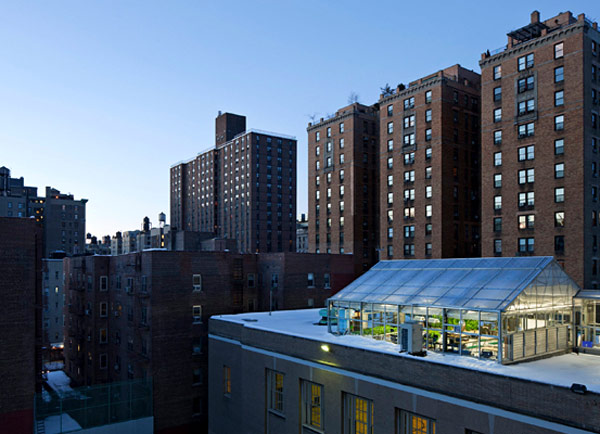 All around the country, people are getting their hands dirty. Empty lots and rooftops in cities are being turned into land that can be toiled and produce food for communities. When one thinks of leafy greens and other vegetables sprouting from the ground, an empty lot in the middle of Cleveland, where a foreclosed home once sat, is probably not the first thing that comes to mind. But urban agriculture is happening, and here is what it’s proving in the process: people care about what they eat, they are procuring it with their own hands, and communities are being affected in the process.
All around the country, people are getting their hands dirty. Empty lots and rooftops in cities are being turned into land that can be toiled and produce food for communities. When one thinks of leafy greens and other vegetables sprouting from the ground, an empty lot in the middle of Cleveland, where a foreclosed home once sat, is probably not the first thing that comes to mind. But urban agriculture is happening, and here is what it’s proving in the process: people care about what they eat, they are procuring it with their own hands, and communities are being affected in the process.
Here is a glimpse of just some of what is going on around the country:
In New York, the City Council recently approved a zoning amendment that expands the size of community garden areas to 25,000 feet. Neighbors of Brooklyn Bedford Stuyvesant’s 462Garden held their first meeting this month on turning a lot that has been empty for almost 20 years into a community garden.
462Garden’s co-founder Shatia Jackson says the goal of the group “is to forge new community bonds and relationships through mutual hard work, independent agriculture and to create a self-sustaining environment for everyone to learn and grow.”
Urban Farming Organization began with just 3 gardens in 2005. They now have over 43,000 gardens around the country. This month, Kansas City and St. Louis were chosen to receive a $20,000 grant that will fund research and practices for urban agriculture. City residents will work directly with farmers in the research to find the best ways to produce and increase healthy food options for their respective city.
Earlier this year, 450 students from 8 schools in New York City signed up to farm at the first farm built in Battery Park in 386 years. Named “Urban Farm,” students grew — with pride — 80 organic vegetable plots.

And those rooftops that give glimpses of the Manhattan skyline? They can also be utilized to support agriculture. Laurie Schoeman, director of New York Sun Works, a nonprofit group that promotes the use of rooftop greenhouses told the New York Times that if all of the unshaded rooftops installed greenhouses, the resulting produce could feed as many as 20 million people in the New York metropolitan area.
A recent study at Ohio State University claims that it’s possible for the city to be 100% reliable on food grown and raised in the city. Furthermore, the study claims that urban food production could bring in up to $115 million for Cleveland’s local economy. How’s that for a way to help our dwindling economy?
Here is another reason urban agriculture matters, particularly for our community. A recent study released by NPR and Reuters shows that Americans are not as concerned about food safety as last year. However, socio-economics appear to play a role in food safety concerns: 53% of respondents who earn less than $25,000 per year were very concerned with the safety of their food. Similarly, respondents with a high school level education or less reported a greater concern for food safety (46 percent) than those with at least a college degree saw a drop in food safety worries (33 percent). People with the have-nots are worried about what they eat, and rightfully so. When’s the last time you saw a Whole Foods on MLK Blvd.?
According to the Black Farmers and Gardeners Association’s Website, nearly 50% of African-American children will develop diabetes at some point in their lives, and deaths from heart disease and stroke are almost twice the rate for African-Americans as compared to whites. We must start building and growing in our own communities.
Healthy food options can be obtained without relying on our global market for imported goods. Farm to table freshness does not have to mean trips to special markets for overpriced organic goods. We can become involved with our communities to produce wholesome foods and spur the economy in the process. As Americans, we continue to look outwards for solutions, from jobs to food, when in actuality, many of the answers are growing right in our backyards.
Here are a few links on how you get involved with your community and support locally grown food in the process:







Cute article, but I still know why exactly it’s important to have urban farms? I like the current set up of the country providing food and water for the city, but I guess my question is, besides money, what does the city offer the country in return for such life sustaining products?